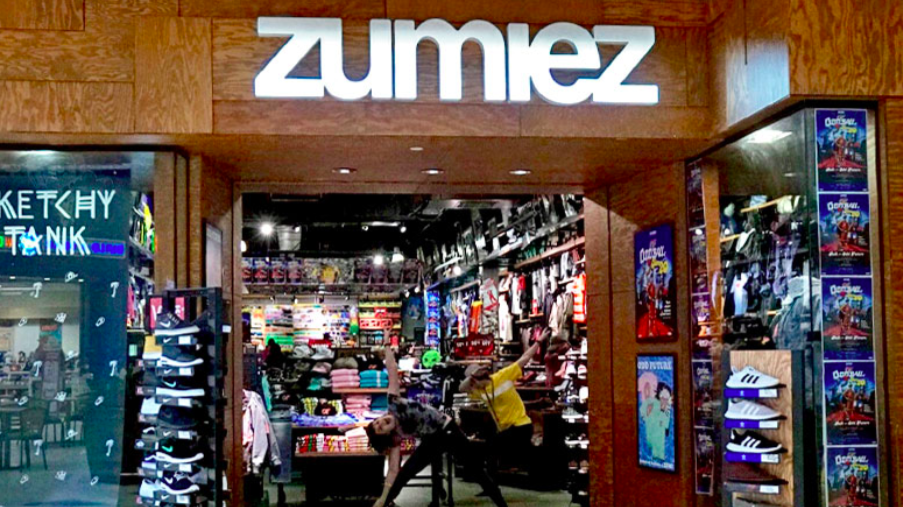Wrapping up its third year of merry holiday results, Zumiez Inc.’s earnings and sales came in well above guidance in the fourth quarter. On a conference call with analysts, Rick Brooks, CEO, credited the chain’s focus on localized merchandise assortments for its recent hot streak.
Brooks said Zumiez’s first driver of success has been its focus on coming up with a mix of “leading and emerging brands that are not broadly distributed.” Strong relationships developed with vendors over the years have helped. Those vendor connections are augmented by “clearly articulating Zumiez’s culture driven lifestyle brand position and showcasing our ability to connect with their target audience in authentic, engaged environment that is uniquely curated by our people.”
Zumiez has further “spent significant time and resources” improving its localized merchandise assortments through investments in technology and employees, including hiring individuals “in tune with the local and national trends that are important to our customers and can speak authentically to them.”
Zumiez’s next “critical” factor behind its recent success has been its focus on speed, marked by its move three years ago to shut down its e-commerce fulfillment center and deliver all digital orders out of stores. Localized fulfillment has reduced shipping distance to customers, reduced click-to-order processing time and helped expand Zumiez margins.
Added Brooks, “Looking ahead, we are going to get faster in every aspect of serving and meeting customers’ needs than we are today. This will be driven over the next few years by getting to our customers even more intimately, through improved digital interactions and enhanced in-store experiences that reflect our strong cultural foundation.”
Finally, Zumiez has leveraged its international expansion into its merchandising capabilities as it has entered Canada in 2011, acquired Europe’s Blue Tomato in 2012 and bought Australia’s Fast Times in 2016. Having a strategic physical presence in seven countries helps Zumiez identify trends that emerge locally and have the potential to expand globally with Zumiez. Zumiez can help launch brands “anywhere in the world and quickly spread globally due to the proliferation of smart devices and social media.”
Brooks added, “So we always think about how global and local and local and global work together in this world and we are seeing again evidence of that of how fast brands move and local brands become global brands, that’s all part of this concept of localization.”
In the fourth quarter ended February 2, comps increased 3.9 percent, which was above the high end of its initial guidance range of flat to up 2 percent.
Sales decreased 1.2 percent to $304.6 million due to a shift in the retail calendar as well as an adjustment to deferred revenue related to its Stash loyalty program worth $3.8 million in the prior year. The comp gain and the addition of nine stores year-over-year partially offset those headwinds.
Comps were driven by an increase in transaction volume as well as an increase in dollars per transaction. The increase in dollars per transaction resulted from higher average in retail, partially offset by lower units per transaction.
All categories comped positive in the quarter, led by footwear and followed by men’s, accessories, hard goods and women’s.
From a regional perspective, North America’s sales decreased 1.9 percent to $260.5 million. Other international net sales, which consist of Europe and Australia, increased 3.5 percent to $44.1 million. Excluding the impact of foreign currency translation, North America net sales decreased 1.6 percent and international net sales grew 8.6 percent.
Gross margin was 37.4 percent in the quarter, an increase of 20 basis points. The increase was primarily driven by 60 basis points improvement in product margin and 40 basis points improvement in inventory shrinkage. Those factors were partially offset by an 80 basis points decrease related to the recognition of deferred revenue from the Stash loyalty program in the year ago period.
SG&A expense was reduced slightly to 25.0 percent compared to 25.2 percent
Operating income improved 2.2 percent to $37.7 million. Net income jumped 48.5 percent to $29.6 million, or $1.18, and was positive impacted by 17 cents a share due to the U.S. tax law changes.
For the full year, total sales increased 5.5 percent to $978.6 million. Comps advanced 5.6 percent. Operating profit was $61.1 million, an increase of 25.3 percent. Net income vaulted 68.7 percent to $45.2 million, or $1.79, with a 35-cent-a-share benefit from tax reform. Inventories were up 2.7 percent at year end.
For February, Zumiez’s comparable store sales slumped 3.8 percent compared to the comp increase of 9.2 percent a year ago. Brooks blamed unseasonable weather, particularly on the West Coast, and delays in tax refunds for the decline and the company sees comps improving to end up flat to up 2 percent for the first quarter.
Said Brooks, “We’re still confident that as we move through the quarter we are going to gain some of that traction back and we’ll have better results for the remaining parts of March here and then into April.”
Sales in the first quarter are expected in the range of $202 million to $206 million, including anticipated comparable sales growth of between negative 2.0 percent and flat to prior year. Consolidated operating margins are expected to be between negative 2.0 percent and negative 1.0 percent resulting in a net loss between 13 and 7 cents per share.
Zumiez expects to open 14 new stores in 2019, including up to five in North America, seven in Europe and two in Australia. Zumiez also announced that will be discontinuing the reporting of monthly sales results.
During 2018, Zumiez added 13 store locations, including five in North America, seven in Europe and one in Australia. Four stores were closed. The year ended with 707 locations including 658 in North America, 41 in Europe and 8 in Australia.
Image courtesy Zumiez
















